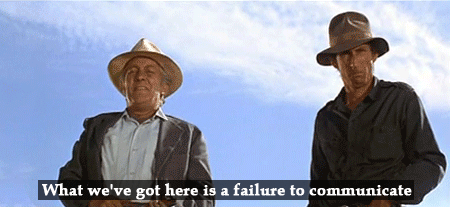
Why Do We Say That? is one of several books of the same title by Scott Matthews. Each looks at various idioms of the English language. Or rather, American English to be more precise.
The information with each idiom tends to be repetitive. Many do not completely convey the true meaning of the idiom as it is today. Case in point- ‘get your act together’ does not convey encouragement or positive motivation. It conveys the speaker’s frustration with another’s behaviour, work performance, etc.

Likewise- ‘have the last laugh’ implies today the notion you have prevailed against great odds. Often this is despite others’ thinking you incompetent, or your work is of no value. Indeed, Miriam-Webster gives the phrase definition as “the satisfaction of ultimate triumph or success, especially after being scorned or regarded as a failure“.
A final, but not the last, example lies in ‘through thick and thin’. The text omits the phrase’s actual origin of “through thicket and thin wood”. The text instead suggests “one’s experiences with both thick and thin slices of bacon or bread”. Say what, now? That notion obscures the fact that, for the original saying, thick is difficult times and thin are good times. Traversing thickets or dense forest is far more difficult than thin woods or sparse plains.

Interspersed randomly are bizarre sections of facts unrelated to linguistics. One of the first is about the fastest animals in the world. Fascinating, but irrelevant to the book’s alleged topic of idioms. These sections don’t even connect to idioms that they might tangentially inform. The one mentioned here is between ‘finding one’s feet’ and ‘hit the sack’.
Overall, it felt compiled by AI, and not fact-checked, or edited. Likewise, the pictures accompanying each were wildly inconsistent in style. Little details gave the impression of generative art, which I have no problem with, but consistency is key. Some of this art has racist or other discriminatory undertones to it. I don’t believe this was intentional; it’s another example of needing better oversight. Since any AI use remains unacknowledged, I must rely on my intuition.

Regardless of whether AI was used or not, the book suffers majorly from the need for further proofing. More egregiously, it suffers from the factual errors and partial information offered as full fact. No works cited or resources section is present to support the claims, or point the interested reader to more in-depth reading material. Even if the information was simply Googled (a simple check of several of these to confirm what I already remembered proved that unlikely at any rate), sources should still be cited.
There is an odd disclaimer at the beginning pretty much saying FU to trademarks, and to harm caused by reading. I don’t understand what any of that even mean. Except perhaps harm caused to the reader’s intelligence level. Oh, and possible ridicule for incorrect usage. But that means you know you didn’t do your due diligence, son. Fact-checks and proofing/editing don’t take that long.

I DNF’d this book towards the end. It became tiresome to find yet another incorrect definition and the editing triggered my OCD anxiety so hard. I cannot, in any conscience, recommend this or any other book in the series.
For those interested in learning about idioms in a more accurate fashion, I recommend Jasper Hartwell‘s IDIOMS Origins and Meanings series.
***Purchased and read for my own curiosity and to my own regret



